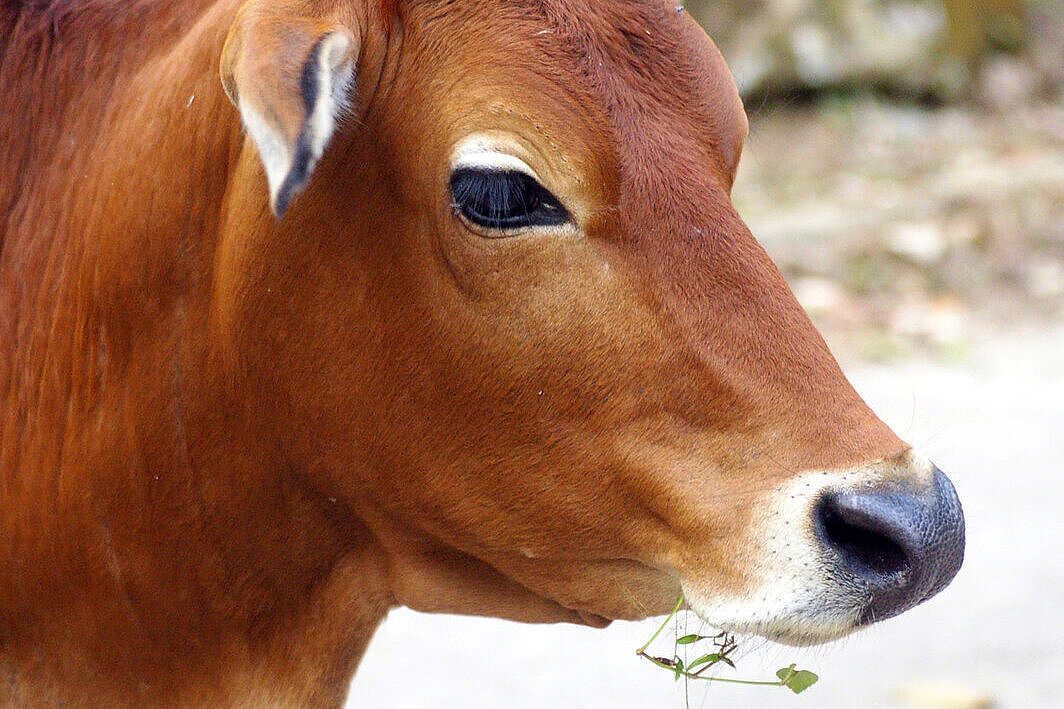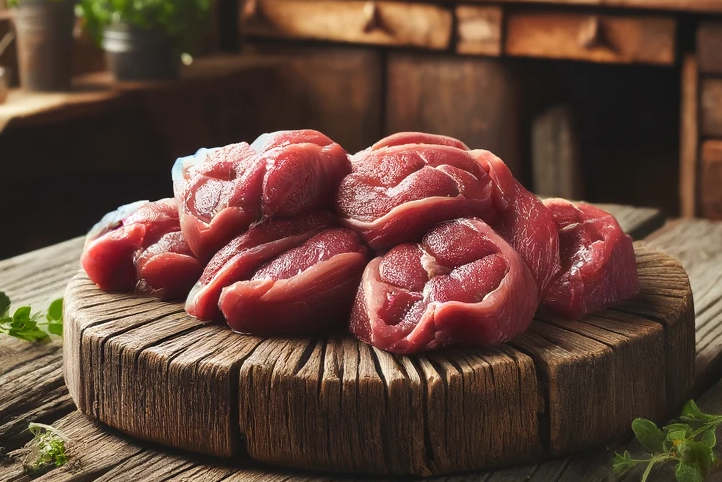Pork cheeks

Pork cheeks, a part of the pig prized in the culinary world for its tenderness and rich flavor, also find their way into the hearts and bowls of our four-legged friends. However, as with any food we offer our furry companions, it's important to thoroughly evaluate the pros and cons. In this article, we'll dive deep into the topic of pork cheeks in relation to dogs, examine what pork cheeks are, and discuss the potential benefits and risks they may pose to our canines.
What are pork cheeks?
Pork cheeks are exactly what the name suggests - the meat that comes from the cheeks of a pig. This cut is known for its firm meat, which, when properly prepared, can be exceptionally tender and flavorful. In human diets, pork cheeks are often slow-cooked to release their full depth of flavor.
The benefits of pork cheeks for dogs
High protein content
As with most meats, pork cheeks are an excellent source of protein. Protein is essential for building and repairing tissues in the dog's body and supports healthy muscle function.
Fatty acids
Pork cheeks also contain certain fatty acids that can contribute to energy production. In addition, a certain amount of fat in a dog's diet can help to keep the coat healthy and shiny.
A taste that delights
Last but not least, the rich taste of pork cheeks is irresistible to many dogs. They can be an excellent reward or an occasional treat to encourage food intake in picky eaters.
The risks and disadvantages
High fat content
Despite the benefits of fatty acids, the high fat content of pork cheeks can be problematic for some dogs. Particularly for dogs prone to obesity or pancreatitis, fatty meats such as pork cheeks can exacerbate health problems.
Danger from bones and preparation
Pork cheeks sold with bones carry the risk of bone splinters, which can lead to internal injuries or intestinal obstruction. In addition, seasoned or smoked pork cheeks, which are often used in human cooking, may contain ingredients that are harmful to dogs.
Risk of bacteria
Raw pork can contain bacteria such as Salmonella and Campylobacter or the virus that causes Aujeszky's disease (also known as pseudogout). Proper preparation is critical to minimize the risk of transmission of these pathogens.
Enjoy with care
Pork cheeks, in moderation and properly prepared, can be a tasty addition to your dog's diet. However, it is important to consider the high fat content and potential risks, especially for dogs with certain health conditions or a tendency to be overweight. Raw pork should be avoided and bones should be carefully removed to minimize the risk of injury and disease. A balanced diet tailored to your dog's individual needs remains the key to a long, healthy and happy dog's life.
If you notice any signs of hypersensitivity or poisoning in your dog, you should see your vet immediately. We are not a substitute for a vet, but we try to be as accurate as possible. Every dog reacts differently and we recommend you get a second opinion or consult your vet if in doubt.
Stay healthy and take good care of your four-legged friend!😊
Similar to Pork cheeks
Venison cheeks are the muscle areas on the cheeks of a deer. Due to their high connective tissue content, they are considered particularly tasty when cooked slowly. In dog nutrition, however, they...
Beef cheeks are part of the head meat of cattle. They consist of dark red, tender and rather lean meat that is surrounded by a thick skin. Beef cheeks are very muscular and have a high proportion of...
Buffalo cheeks are, as the name suggests, the meat obtained from the cheeks of a buffalo. This muscle meat is known for its toughness, as it has a high concentration of collagen. During the slow...
Horse cheeks are the meat obtained from the cheek area of horses. This muscle meat is particularly tender and full of flavor, as the cheek muscles in animals are constantly in motion, just like in...



